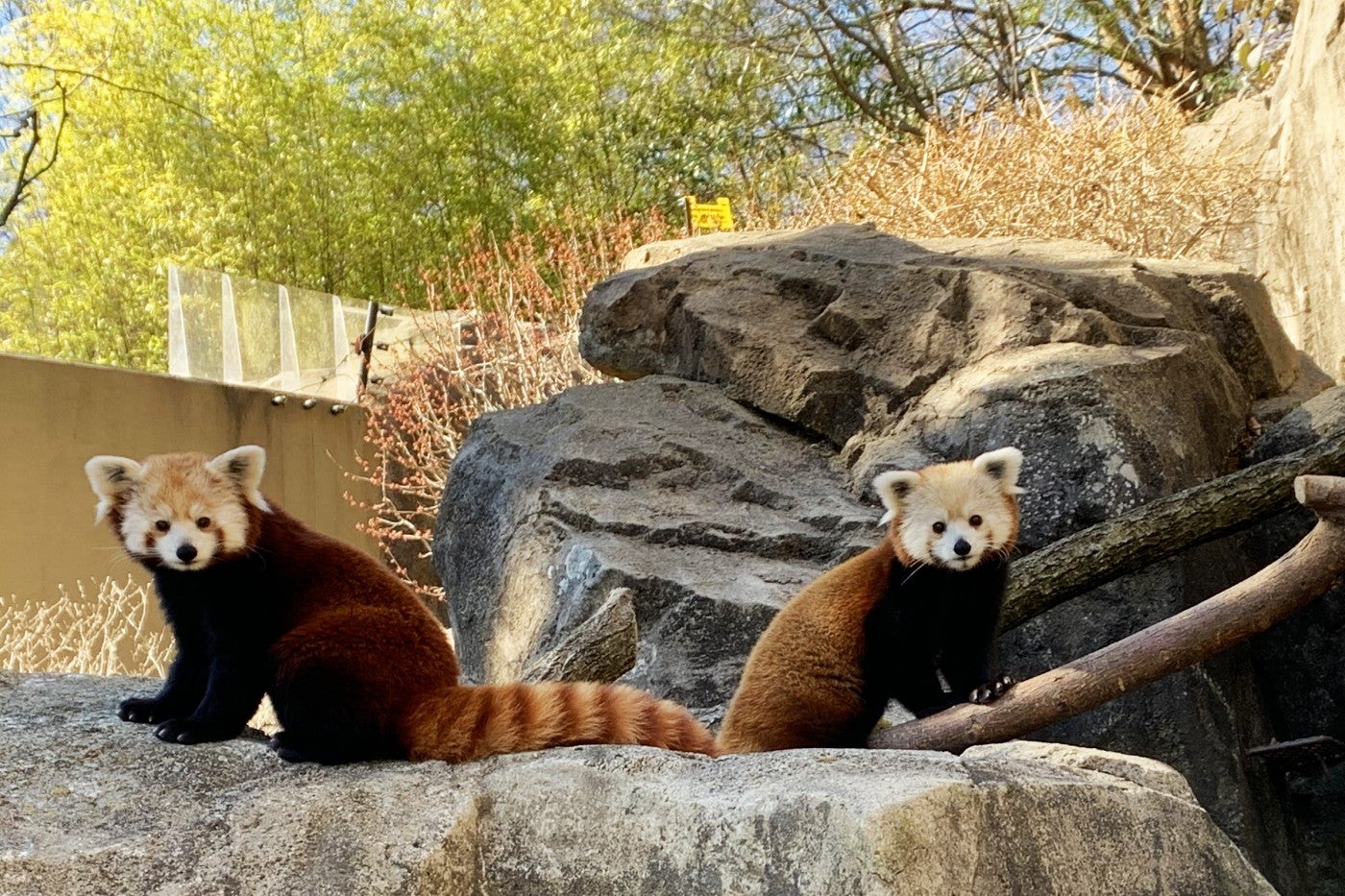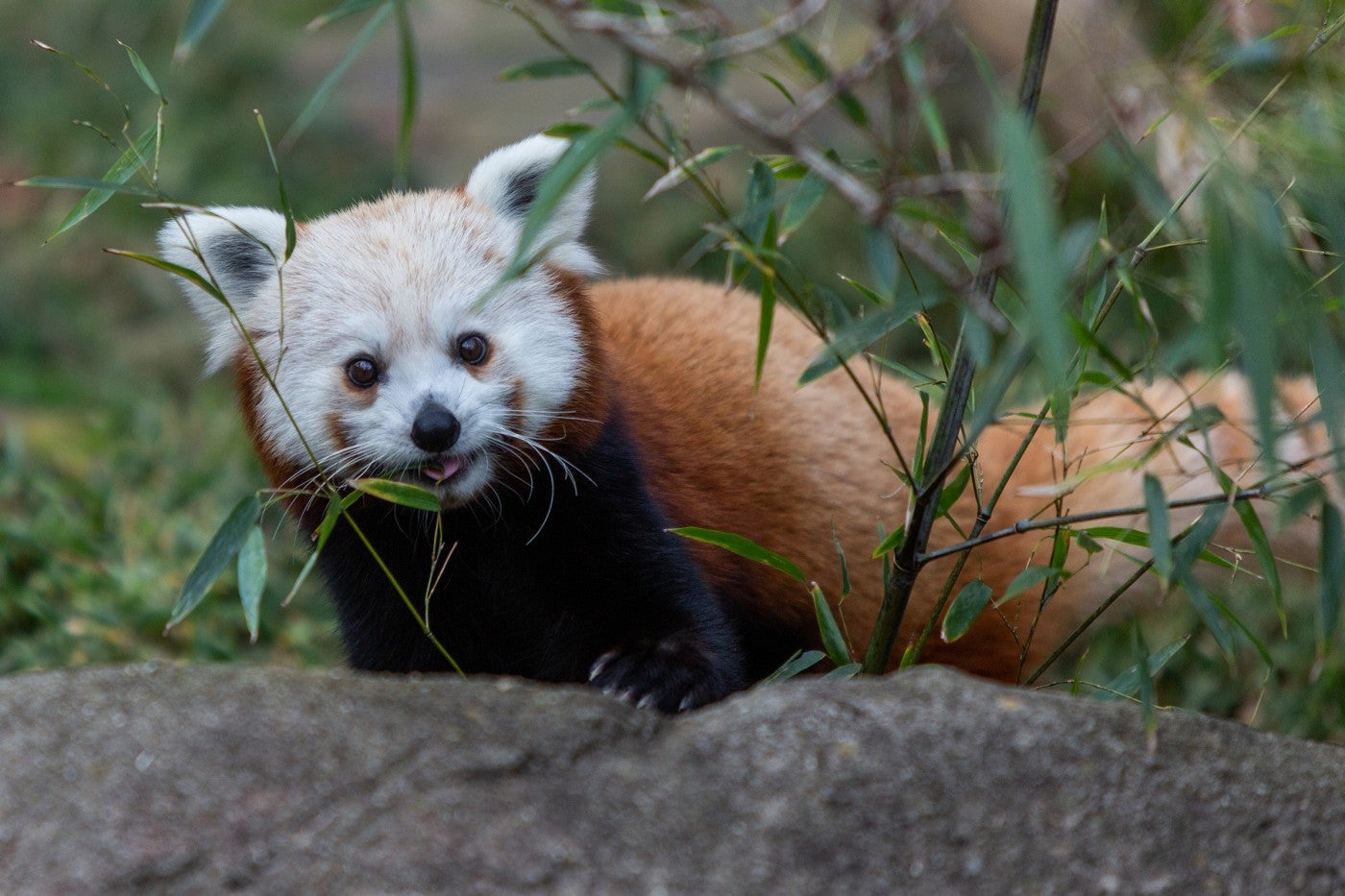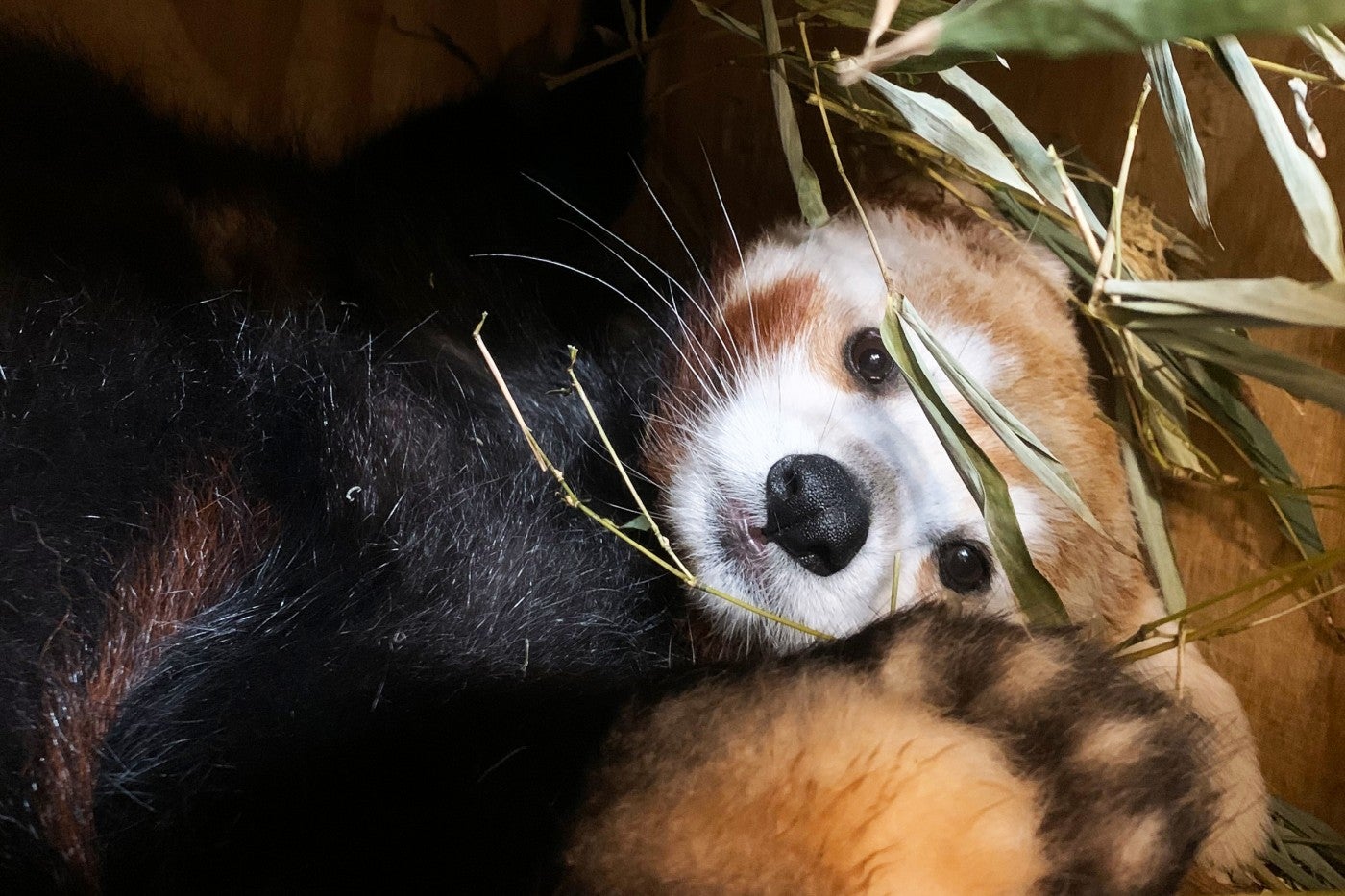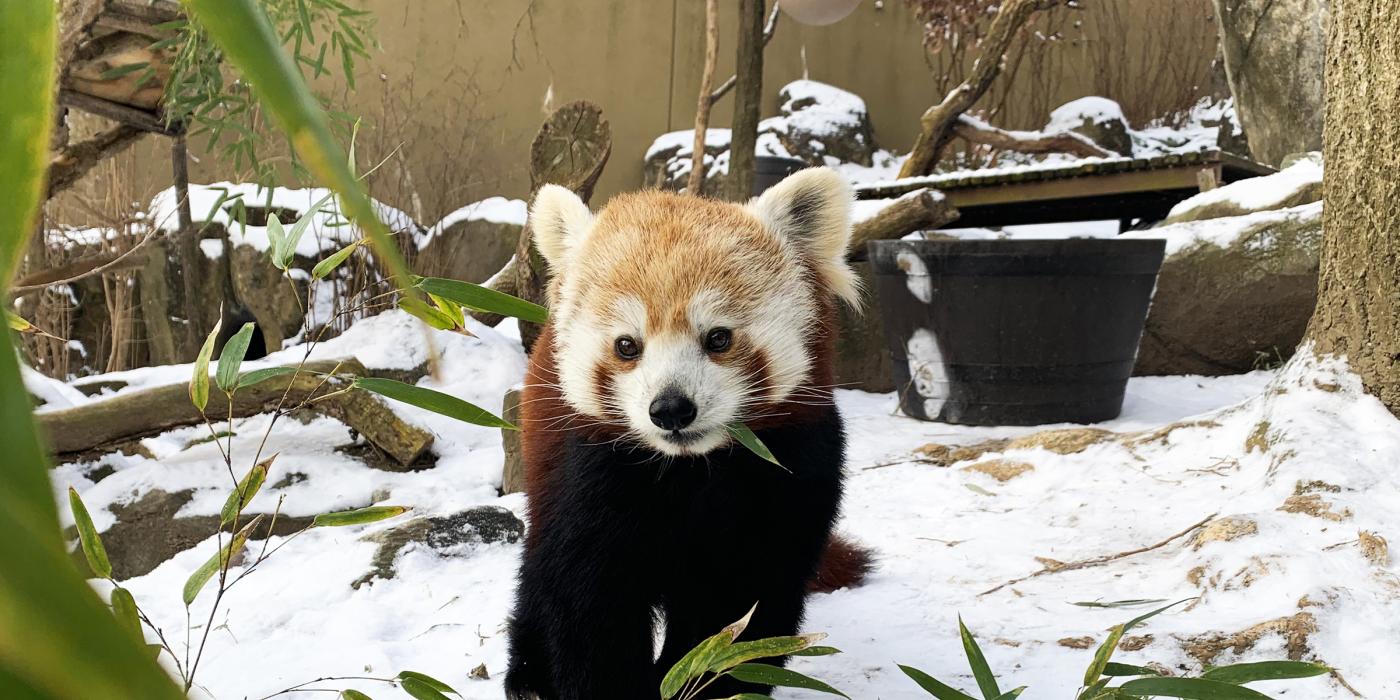Meet Red Pandas Asa and Chris-Anne
We may find the winter winds and snow frightful, but for red pandas Asa and Chris-Anne, the cold couldn’t be more delightful! Our firefoxes are big fans of frosty weather, thanks to some amazing (and adorable) adaptations—like fuzzy feet! Get to know our pandas’ personalities and insider tips on the best times to spot them from Asia Trail keeper Mariel Lally.
What are Asa and Chris-Anne’s personalities like?
Asa is very bold and clever! Throughout her time at the Zoo, she has lived with four red pandas. With the arrival of each new habitat-mate, Asa seems to be the “panda in charge.” She is always the first to shift outside for fresh food, as well as the first to participate in husbandry training sessions. Asa has unique relationships with each of her keepers and is quick to catch on to new training behaviors. We have to keep on our toes, or she will try to ‘outsmart’ us! Asa is a master at puzzle feeders and figures out how to retrieve treats—even from toys she has never seen before—in a flash.
Chris-Anne has lived at the Zoo for a little over a year, but she is still very curious about her environment and those around it. When it comes to investigating something new, Chris-Anne tends to be more reserved than Asa, allowing her to take the lead while she takes her time to assess the situation from afar. She has a quirky side and has interacted with keepers and the habitat in ways no other red panda has before. Chris-Anne seems to enjoy people-watching from the window in their indoor habitat.

How do you tell them apart?
Asa and Chris-Anne’s coloration and markings are quite different. Asa’s forehead is a deep red, and her body is uniformly red along her back and hips. Chris-Anne, on the other hand, has a paler face and very blonde hips! When they are seated next to one another, it’s very easy to see that Asa is quite a bit bigger than Chris-Anne.


Do they have a favorite hangout spot?
If you’re struggling to spot the red pandas, look up! As semi-arboreal animals, red pandas spend a lot of time way up high in the trees. Often, Chris-Anne can be seen at the top of the tree that is near their indoor habitat. Asa seems to prefer napping in the firehose triangles suspended from the trees.
Red pandas are crepuscular; they are most active at dawn and dusk. We recommend visiting them in the early morning or late afternoon, since they tend to take naps in the middle of the day. They are especially fun to watch during breeding season, from Jan. 1 to May 1, because their interest in socializing and playing increases at that time of year.
Tackles, tumbles and twitters. A happy snow day for red pandas Asa and Chris-Anne!
Are the red pandas on view in the winter?
Yes! In fact, our red pandas are much more active in the winter months than they are during the summer. In their native habitat—the high altitude temperate forests within the Eastern Himalaya Mountain range—it gets very cold and snowy. If you visit the Zoo on a snow day, you’ll likely see Asa and Chris-Anne playing and having a blast!

How do red pandas stay warm when it’s cold?
Red pandas have several adaptations that help keep them warm. For starters, red panda fur is extremely dense and covers all surfaces of their bodies other than their eyes and nose! To tread through snow and ice, they have fuzzy feet—even the bottoms of their paws are completely covered in fur. Last, their long, bushy tail does more than help them balance as they move through the trees; it also acts as a scarf or blanket. If they wrap their tail tightly around their body, they can shield their eyes and nose from the wind and snow.
Because of all of these adaptations, Asa and Chris-Anne are able to have access to their outdoor habitat even when temperatures reach a frigid 0 degrees Fahrenheit. In the winter, their indoor habitat stays a cool, crisp and comfortable 40 degrees Fahrenheit. In warmer months when temperatures creep above 75 degrees Fahrenheit, our red pandas prefer to spend most of their time inside their air-conditioned indoor habitat—just like us!
Red panda Asa investigates a Kong toy filled with one of her favorite foods: grapes!
What’s a cool fact about red pandas that most people don’t know?
Although red pandas look similar to raccoons, the two species are not related. Red pandas are actually living fossils, and the only living member of their family: Ailuridae! Their closest ancestor roamed the earth 5 million years ago.
This story appears in the December 2021 issue of National Zoo News. Rev-up your red panda knowledge and check out Is a Red Panda a Bear? And More Red Panda Facts. Want to follow a day in the life of a red panda keeper? Don’t miss Caring For Red Pandas: Stories From a Real-Life Zoo Guardian.
Related Species:



